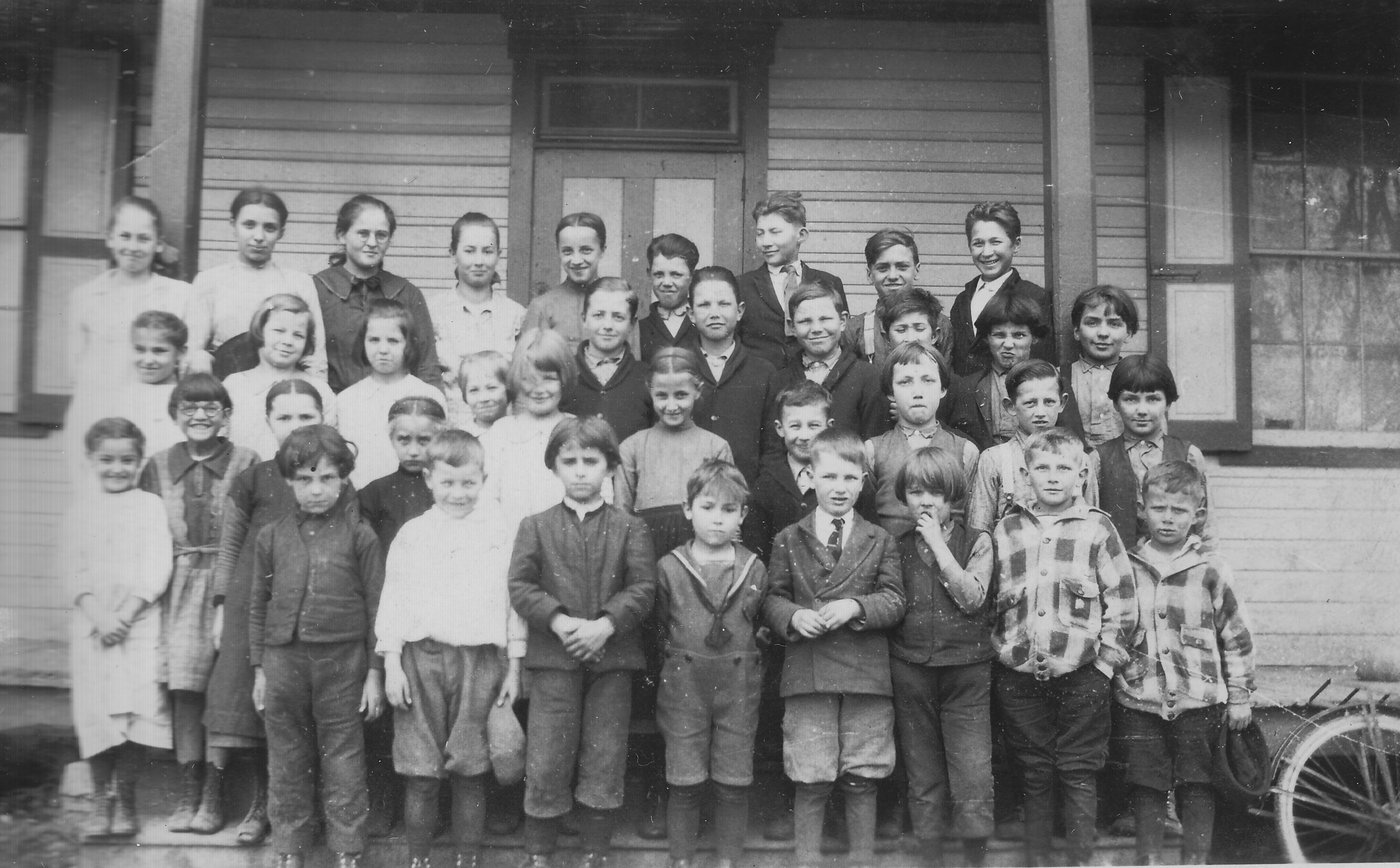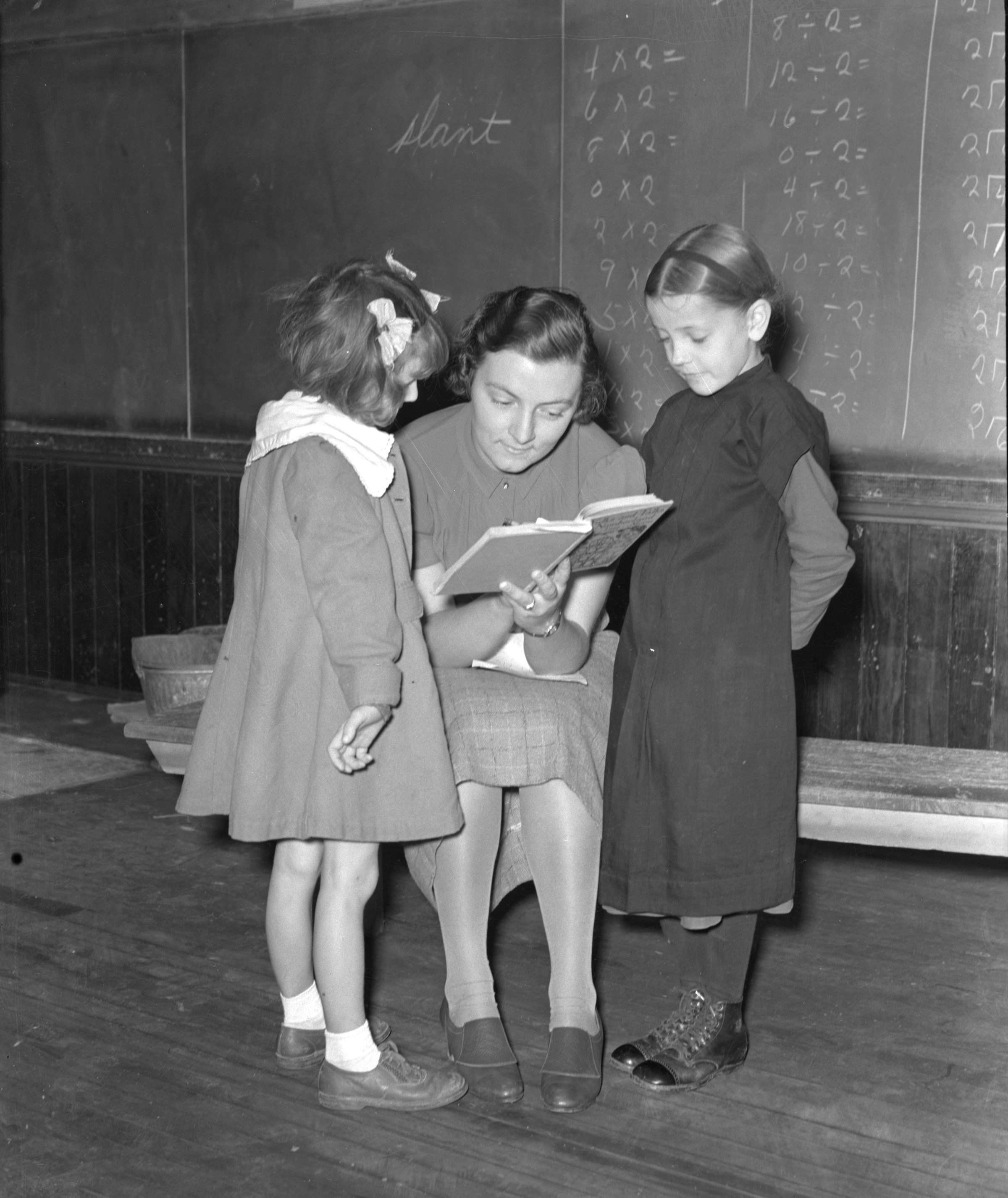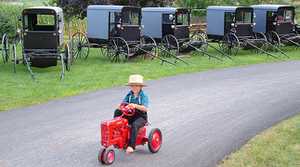Most Amish today will not pose for a photograph. Considering it a violation of the Second Commandment, which prohibits the making of "graven images," the Amish believe any physical representation of themselves (whether a photograph, a painting, or film) promotes individualism and vanity, taking away from the values of community and humility by which they govern their lives. Occasionally, Amish people did have their photos taken, as you can see with the couple in the first image who likely went to a studio for their portrait in 1875. But by the time photography became popular in America in the mid-19th century and photographers and researchers armed with cameras began appearing in Amish communities, most Amish objected to appearing in or posing for photographs entirely.
The images in this gallery were all created between 1875 and 1942.
-

The first Amish came to America from Europe in the early 1700s to participate in William Penn's "holy experiment" of religious tolerance. Most settlers landed in Pennsylvania, but later spread across the country. Here, European-born Amish immigrants Henry Stahly and Magdalena Ehrisman Stahly in Nappanee, IN in 1875.
Credit: Steven M. Nolt -

Prior to 1950, Amish and non-Amish (or English) youth attended public schools together. Here, you can see the public, one-room Millcreek School in Stormstown, PA, with Amish children playing in the yard. 1923.
Credit: Landis Valley Museum -

Since the mid-20th century, the Amish have developed their own private one- and two-room schools. Pictured here, the 1927 Millcreek School class photograph in Stormstown, PA.
Credit: Landis Valley Museum -

Depicting an Amish couple, this poster -- made between 1936-1941 -- advertises the "Costumes and Handicrafts of the Pennsylvania Germans."
Credit: Works Progress Administration, Library of Congress -

An English and Amish girl are tutored by their non-Amish teacher in 1938 in Lancaster County, PA.
Credit: Library of Congress -

From a 1938 National Geographic pictorial on the Pennsylvania Dutch, an Amish mother prepares her sons' lunchboxes with meat from their smokehouse, homemade bread, and last summer's fruit, which has been jarred and stored.
Credit: National Geographic Society, Corbis -

In this typical one-room public school in Lancaster County, PA, English, Mennonite and Amish children have recess in 1938. Their Mennonite teacher stands on the stoop.
Credit: National Geographic Society, Corbis -

Many Amish and non-Amish children attended school together. Note the two Amish girls on the left wearing traditional clothing. The caption beneath this photo, taken in 1940, says Mary S., Nancy N., BJ S., Irene M. and Dorothy K. were all students of Emmalie H. Hillegass.
Credit: Landis Valley Museum -

This horse-drawn John Deere plow came up for auction in Lancaster County, PA in March 1942. Most Amish farmers continue to use horse-drawn equipment in their fields, however since the mid-20th century some have started using gasoline engines to power the harvesting equipment.
Credit: US Farm Security Administration/Office of War Information, Library of Congress -

While single Amish men remain clean-shaven, once a man is married he will not shave his beard for the rest of his life. Women, too, do not cut their hair, but typically part it in the middle and pull it back in a bun. This practice has remained largely unchanged throughout the 20th century.
Credit: US Farm Security Administration/Office of War Information, Library of Congress -

In the first half of the 20th century, most Amish households did their own butchering, but gradually, many began to use the services of Amish butcher shops. Here, a man and woman prepare beef for canning in March 1942.
Credit: US Farm Security Administration/Office of War Information, Library of Congress -

This beardless unmarried man, not yet a member of the church, may have posed for this photograph while he was working in the barn. March, 1942.
Credit: US Farm Security Administration/Office of War Information, Library of Congress -

While Amish people cannot install telephones in their houses, they are permitted to use them in a public setting such as this public phone booth outside the general store in Barreville, PA. March 1942.
Credit: US Farm Security Administration/Office of War Information, Library of Congress









